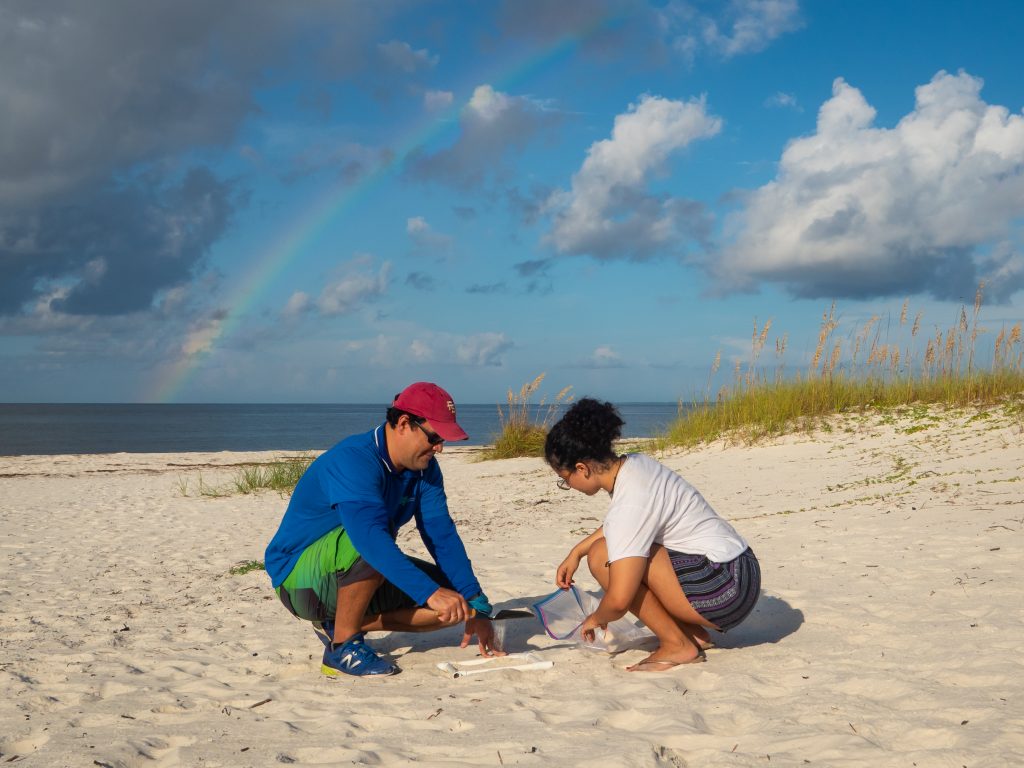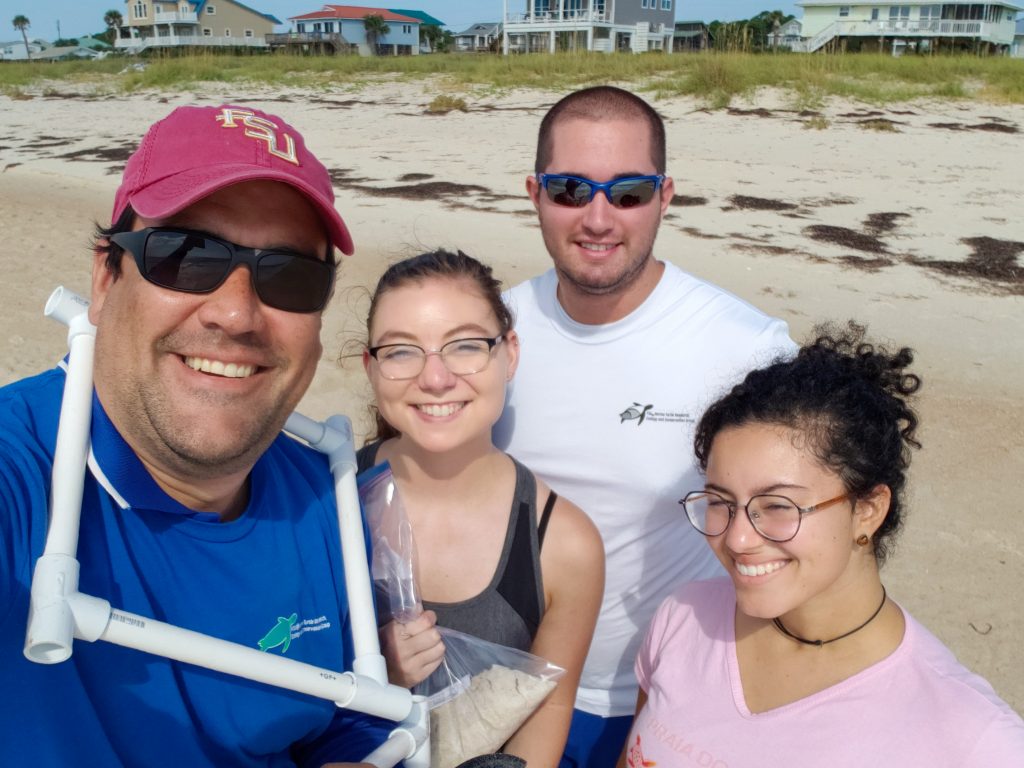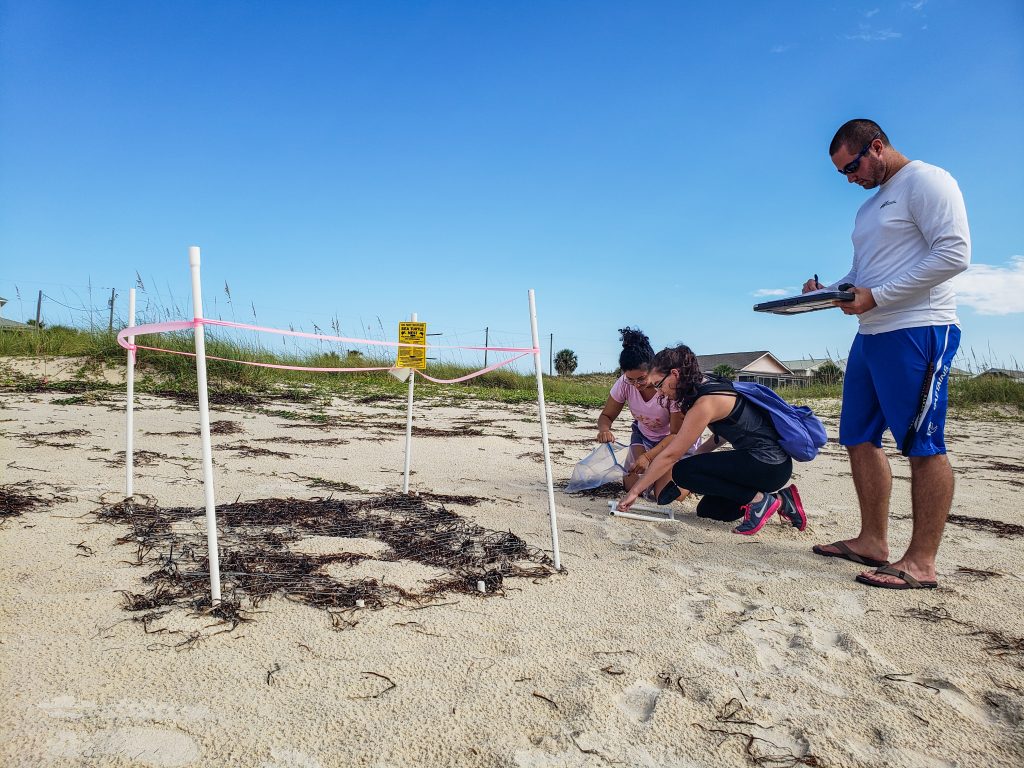Marine turtles are affected by marine debris during every stage of their life. They crawl through plastic on the way to the ocean as hatchlings, swim through it while migrating, confuse it for food and then crawl back through it as adults. Hundreds of thousands of marine turtles die each year from ocean pollution and ingestion or entanglement in marine debris. Concern also exists on whether marine debris, in particular microplastics can transport toxicants and alter sediment properties affecting temperature and sediment permeability and thus the reproductive output at marine turtle nesting grounds. Our lab focuses on quantifying the exposure of marine turtles to marine debris and understanding the impacts that it may have on marine turtles.
EXPOSURE AND RISK OF MARINE TURTLES TO MARINE DEBRIS AND MICROPLASTIC
PUBLICATIONS
Fuentes, M. M. P. B. , Fuentes, M.M.P.B., Beckwidth, V., Ware. M. (2023). The Effects of Microplastic on the Thermal Profile of Sand: Implications for Marine Turtle Nesting Grounds. Frontiers in Marine Science.
Ware, M., Fuentes, M. M. P. B. (2020). Leave No Trace ordinances for coastal species management: influences on sea turtle nesting success. Endangered Species Research 41,197-207.
Garrison, S., Fuentes, M. M. P. B. (2019). Marine debris at nesting grounds used by the Northern Gulf of Mexico Loggerhead Recovery Unit. Marine Pollution Bulletin, 139, 59-64.






